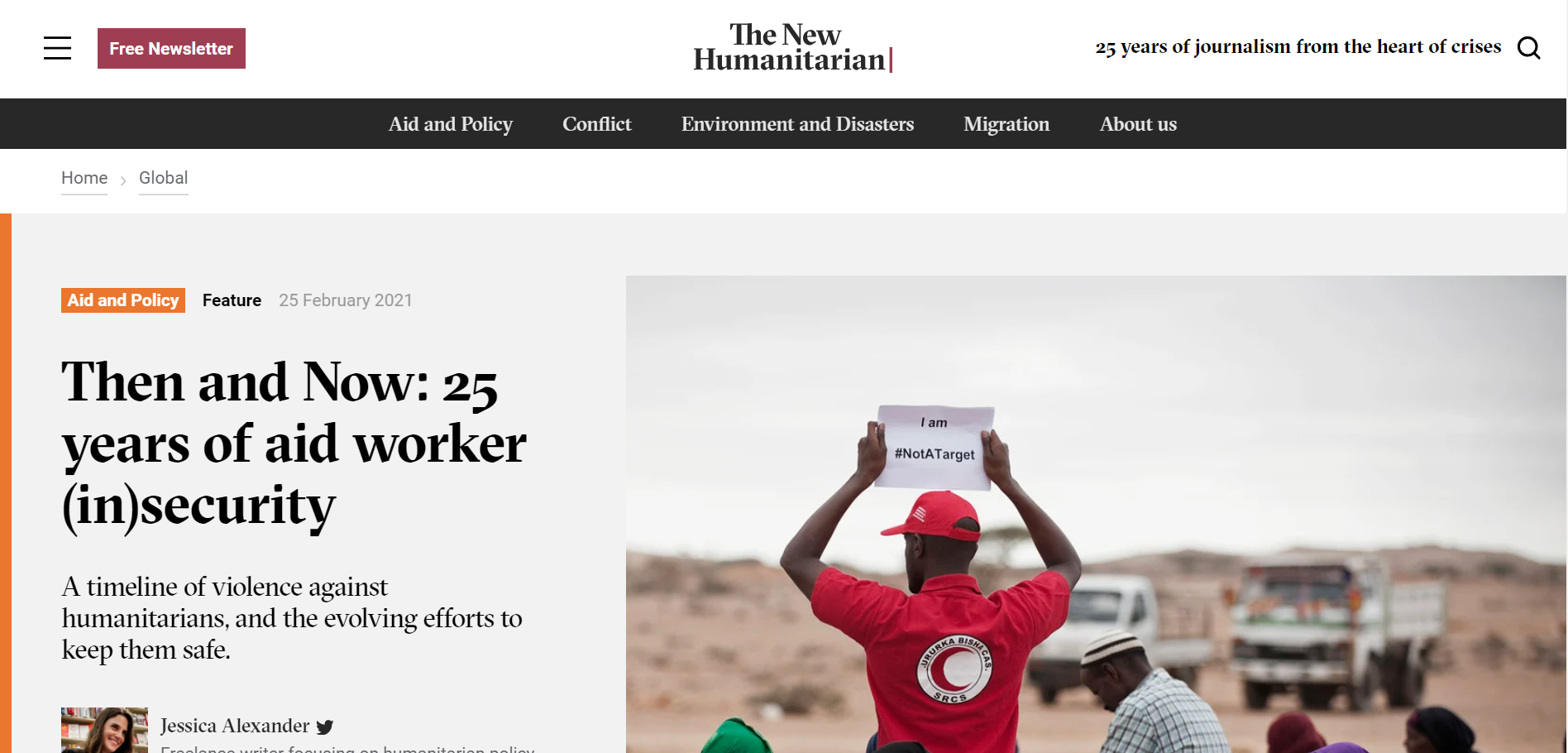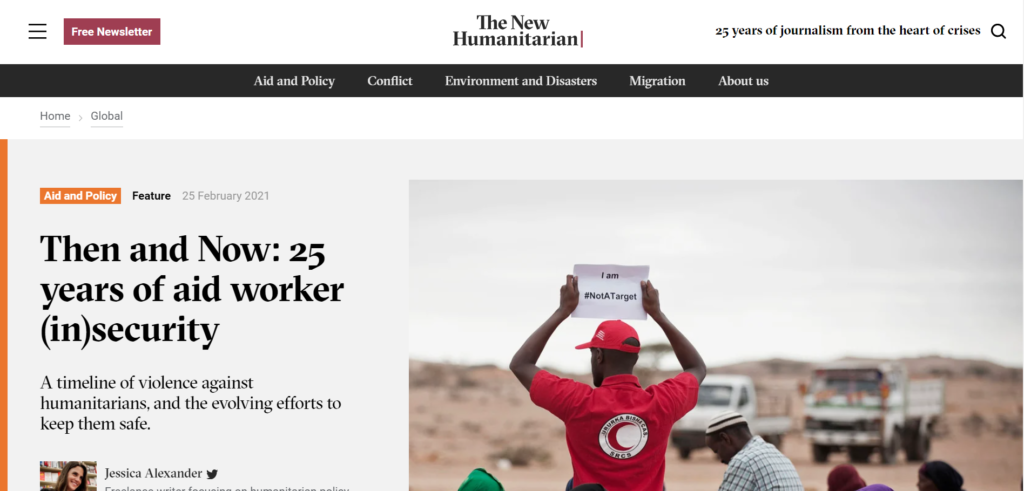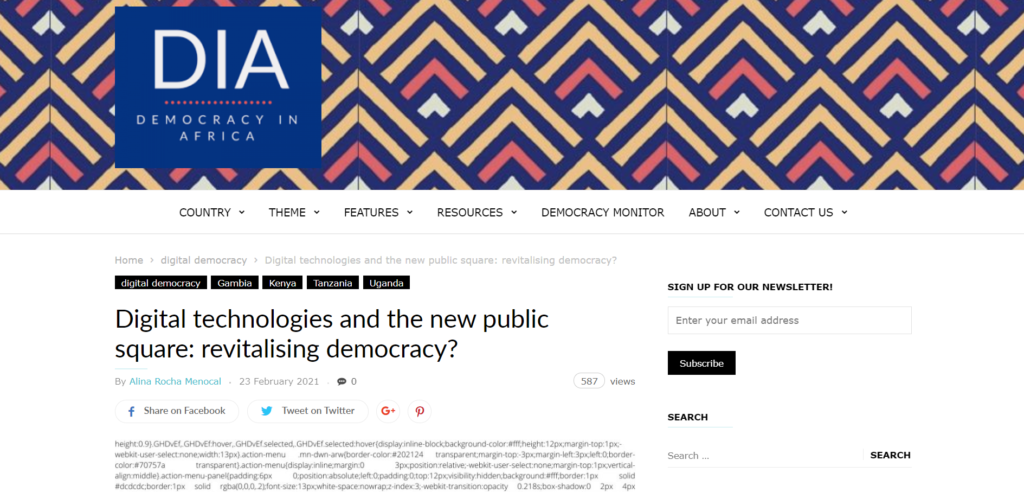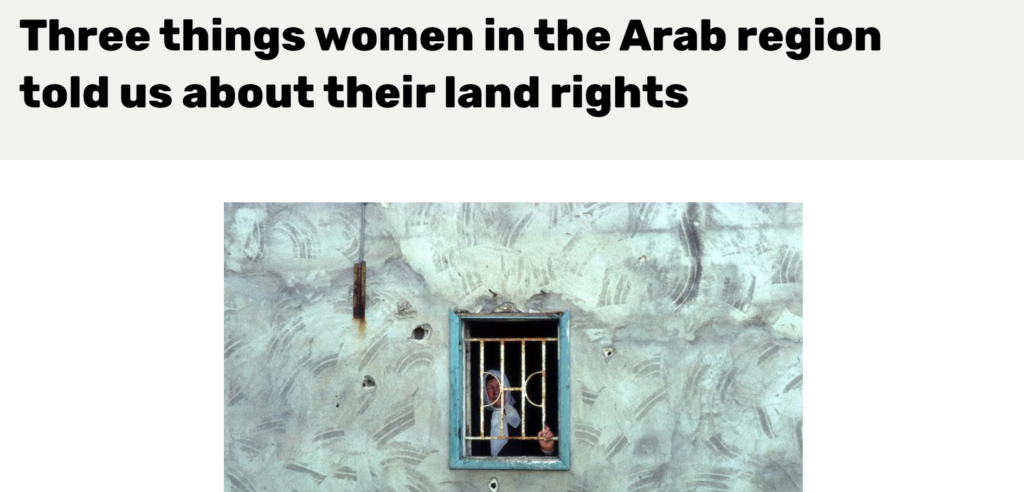“What If”: the five to read as humanitarian in February 2021 – my challenge to update you
Last week’s attack on WFP’s convoy in Eastern DRC got me. Thinking immediately about October 2015. For me as ex-MSFer (once an MSF-er always MSF I think) that means the US airstrike destroying an MSF hospital in Kunduz. Killing 42 people. The launch of the #NotATarget campaign following that event. Not surprisingly I have chosen the extensive analysis and time line in the Then & Now series of the New Humanitarian this month: Then and Now: 25 years of aid worker (in)security.
Another, already much cited one is the What If list questions with answers for a paradigm shift in the Aid System from Marie-Rose Romain Murphy. The third article this months concerns digital technology. How have ICTs altered power relations, links between state and society, and the nature
of participation, contestation and representation? While digital technology is my cup of tea, land rights isn’t. However I came across an article that got my attention, something worth to catch up on: Three things women in the Arab region told us about their land rights. Final contribution this month comes from the ICRC blog: Why we may need more humanitarian bureaucracy, not less.
“What if?” Questions with answers for a paradigm shift in the Aid System
Marie-Rose Romain Murphy from CDA wrote up an excellent “What If” Question and Answers blog. Answers for a paradigm shift in the aid sector.
-
What if the shroud of invisibility that has been forced upon the reality of socio-economic and geopolitical dynamics of the foreign Aid sector was peeled back to reveal the blinding truth?
-
What if Global South organizational mapping was actually inclusive?
-
What if the Aid sector was forced to face the realities that they refuse to see?
-
What if all controlling stakeholders acknowledged the power and force for good of local leaders and organizations?
-
What if the research guiding the Aid sector’s strategic goals and actions was locally produced?
-
What if the Aid sector shifted its values and valuation system?
-
What if the Aid sector shifted the power and let communities lead?
Then and Now: 25 years of aid worker (in)security
Then and Now: The past is often a good predictor of what lies ahead. Jessica Alexander and Ben Parker build and wrote a extensive timeline of violence against humanitarians, and the evolving efforts to keep them safe.
This week’s deadly attack on a World Food Programme convoy visiting a school in eastern Democratic Republic of Congo is a reminder of the risks faced by humanitarians. Around the world, aid workers expressed shock and sadness, repeating calls they are #NotATarget. For a time, aid workers didn’t really consider these kinds of dangers. Throughout the 1990s, humanitarians operated with loose security restrictions, moving freely in even the most dangerous operating environments. The early 2000s was a turning point. Humanitarianism was becoming more politicised. Arguably, its aura of neutrality was slipping. Its workers found themselves deliberately targeted, and increasingly attacked. With wake-up calls in the years to follow.
Digital technologies and the new public square: revitalising democracy?
Democracy in Africa (DIA) is dedicated to build a bridge between academics, policymakers, practitioners and citizens. They focus in particular on encouraging academics to share their work on African politics in accessible formats, encouraging engagement and wide-ranging debate.
Alina Rocha Menocal wrote a blog about Digital Technologies this month: Over the past 15+ years, the world has witnessed an astonishing transformation in information and communications technologies (ICTs) across both developed and developing countries, including digitalization, mass-accessible internet, video platforms, smart phones, and social media. This has generated tremendous enthusiasm about the potential of ICTs.
Over time, however, unbridled techno-optimism has given way to more pessimistic appraisals about the impact of ICTs on governance and how technology may in fact undermine the quality of democratic processes and help to strengthen authoritarian practices.
So how is technology changing the ways that citizens organise, mobilise and engage politically? How have ICTs altered power relations, links between state and society, and the nature of participation, contestation and representation?
Three things women in the Arab region told us about their land rights
Prindex Researcher Joseph Feyertag sets out some key findings from his latest paper ‘How perceived tenure security differs between men and women in the MENA region’
It is for good reason that gender is a major theme at this week’s Arab Land Conference. Around just 5% of women own land or property in the region – one of the lowest rates in the world. Yet, little is known about how Arab women experience land rights, and rarely are they asked – despite two SDG targets designed to monitor perceptions of land rights among men and women.
This is a short read with key findings, if you are interested in the full report, please take a look here
We may need more humanitarian bureaucracy, not less
In the humanitarian sector, bureaucracy has been faulted for everything from ageism and the suppression of talent to a bloated and inefficient response.
But when you examine three of the main issues currently plaguing the sector — sexual misconduct, corruption and fraud, and the politicization of resource allocation — the case for watering down humanitarian bureaucracy weakens, argue Dr. Aaron Clark-Ginsberg and Mary Kate Adgie, researchers at the nonprofit nonpartisan RAND Corporation. Instead, as they outline in the ICRC blog, what might be needed is more bureaucracy, not less.





